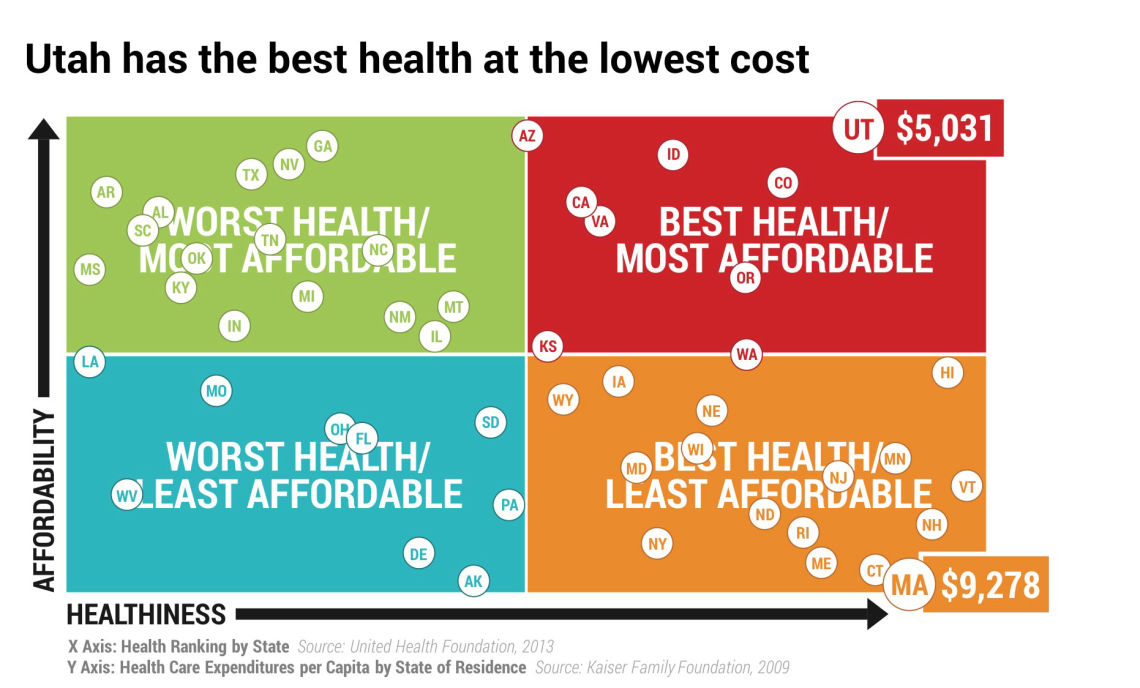tah “holds a unique distinction” when it comes to health care, according to a special report by the New England Journal of Medicine. No other state spends less per capita on medical care — and few boast healthier populations. The question is, why? Utah’s “clean-living people” and youthful demographics deserve some of the credit, writes journalist Elizabeth Gardner. But so does its high-quality, efficient health care system. Even after controlling for Utah’s population, the state’s hospitals have good health outcomes and low costs.
Learn more in the complete article: NEJM Catalyst
This post originally appeared on the Health Sciences blog.
Accelerate Editorial Team
We asked Zac Watne, Utah’s payment innovation manager (he gets paid to understand the volatile world of payment reform) to give us a primer on “bundles.” Regardless of change happening in health care, thought leaders predict that payment reform, and specifically, bundled payments, are here to stay. Why? Bundles deliver care with improved outcomes at a lower price all over the United States. In this post, Zac outlines the difference between voluntary and mandatory bundles.
Health care organizations and providers have some understanding what they charge for care. But nationally, providers have a “complete lack of understanding” about the costs of health care, according to Michael Porter, Ph.D., and Robert Kaplan, Ph.D., ("The Big Idea: How to Solve the Cost Crisis in Health Care").
Finding evidence to change the status quo isn’t easy; thinking about evidence in terms of how it persuades—whether subjective or objective—can make it easier. Plastic surgery resident Dino Maglić and his colleagues followed their guts and saved money by improving the laceration trays used to treat patients in the emergency department.
